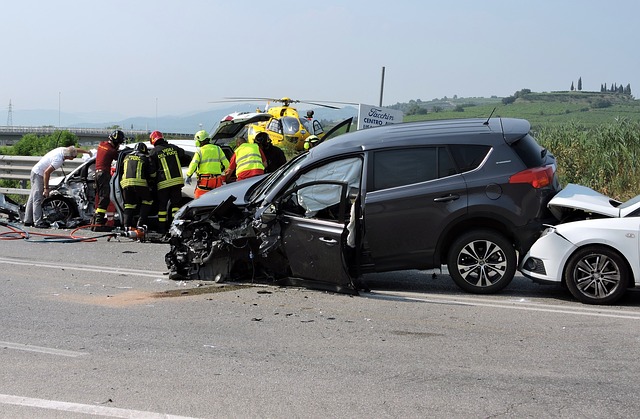 Why Do Accidents Happen?
Why Do Accidents Happen?
Accidents, also known as actions that cause unintentional injury, or are categorized as an undesired, incidental and unplanned event that could have been prevented has circumstances leading up to it been recognized and acted upon before its occurrence.i Since the occurrence of an accident is typically preventable and usually desirable, the question of why they happen has appealed to many different scientists. Several of the most popular theories are listed below.
-
Domino theory
The domino theory came to be formed within the circumstances surrounding the Cold War. I this context it said that if one country or region fell under the influence of communism, then surrounding countries would fall in a domino effect.ii In the context of accidents, this theory states that accidents occur because of a chain of sequential events (also like falling dominoes). This theory also further posits that removing a key factor, such as one unsafe condition or act, will prevent the start of the chain reaction.iii
-
Swiss cheese theory
The swiss cheese model of accident causation is typically used in risk analysis and risk management in industries such as aviation safety, engineering, healthcare, and emergency services. It essentially compares human systems to multiple slices of swiss cheese, stacked side by side, in which the risk of a threat materializing is mitigated by the layers and types of defenses. In theory, weaknesses and failures in one defense do not allow another risk to materialize since other defenses are also present to prevent a single point of weakness. This model is also called the cumulative act effect.iv
-
Systems theory of accident
A system accident is also called an “unanticipated interaction of multiple failures” in a complex system. This is typically found in technological or organizations fields. In this model, small errors of judgment, flaws in technology, and insignificant damages all combine to form an emergent disaster. In this theory, there is a realization that in the real world, accidents frequently have multiple causes. Therefore, these types of accidents are easy to diagnose after the fact, but very difficult to predict ahead of time since there are too many potential action paths.v
-
Human reliability (human factors) theory of accident
The human reliability theory relies on variables that relate to human reliability. Performance by individuals can be influenced by many factors including, age, state of mind, physical health, attitude, emotions, propensity for mistakes, errors and cognitive biases. These types of accidents are more common in conditions that emphasize a user-centered design or an error-tolerant design. Within the aviation industry, this theory was used to develop the Human Factors Analysis and Classification System to understand the role of human error in aviation accidents. This system distinguishes between ‘active failures’ of unsafe acts and ‘latent failures’ of preconditions of unsafe acts, supervision and organizational influences. Unsafe acts are completed by the human operator and can be errors of perception, decision-making or skill-based performance. Violations are deliberate disregard for the rules or procedures.vi
-
Accident/Incident theory of accident
The accident/incident theory is an extension of the human reliability, or human factors, theory. The difference being that the accident/incident theory goes a step beyond and introduces the following concepts: ergonomic traps, decisions to err, and systems failure. In this model, ergonomic traps would refer to things such as incompatible work stations, tools or expectations-also defined as a management failure. A decision to err would be considered a personal failure whether unconscious or conscious. A systems failure would be a management failure, such as a bad policy or lack of training.vii
-
Epidemiological theory of accident
The epidemiological theory is a more traditional approach that focuses on accidents with resulting injuries and encompasses environmental issues that can lead to sickness, disease and impaired health. There are two key components to this theory. Predisposition characteristics are those tendencies that might predispose a worker to a certain action. Situational characteristics are factors that may vary by experience, such as peer pressure, poor attitude and risk taking behavior. Epidemiological theory believes that these characteristics, taken together, can cause or prevent accidents that a person predisposed to a given situation or condition may succumb to.viii
-
Combination theory of accident
Combination theory of accident causation believes that no one theory or model can adequately describe or explain the cause of all accidents. This theory goes on to say that a combination of two or more theories is typically necessary to fully explain.ix
-
Behavioral theory
This theory is also called behavior-based safety and it includes 7 basic principles for accident prevention: intervention, identification of internal factors, motivation -important/”>motivation -important/”>motivation -important/”>motivation to behave in the desired manner, focus on the positive consequences of appropriate behavior, application of the scientific method, integration of information, and planned interventions.x
-
Drugs or alcohol
The use of drugs or alcohol while engaging in other activities often increases the risk of causing or being in an accident. Drugs and alcohol are the root or a contributing cause of many accidents every year.xi
-
Medical contributors
Medical conditions, such as clinical depression and obesity, also contribute greatly to causing accidents.xii











January 15, 2013 10:19 am
THANKS FOR THIS ARTICLE ITS VERY HELPFUL FOR ME BECUASE I REALLY NEED IT FOR MY ECART (MY TOPIC IS ABOUT ACCIDENTS) SOOO THANKS XD LOL!!!! :):):):):) !_! ^_^ 0_0